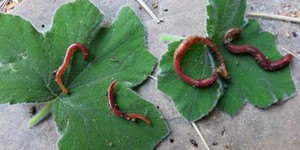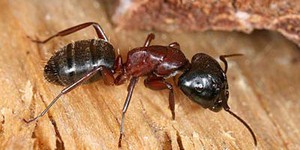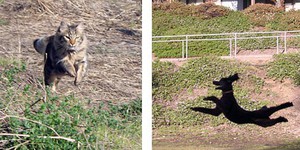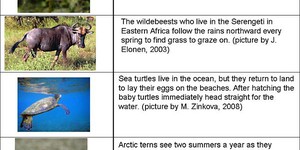Third Grade, Zoology Science Projects (20 results)
Animals have developed an amazing variety of body plans, behaviors, and strategies in order to succeed in the struggle for survival. Explore topics ranging from regeneration, camouflage, animal migration, how to attract hummingbirds, and more.
|
Select a resource
Coding Projects
Sort by
|
Do you really catch more flies with honey than with vinegar? Do an experiment to find out! Watch the video above to learn how to make a simple homemade fly trap using a plastic bottle. Then, experiment to discover which bait attracts the most flies. You can try a variety of liquids, and you can also use solid bait like rotting food or meat, but you will need to add some water so the flies drown. A drop of soap can help break the surface tension of the water, making it easier for the flies to…
Read more
In the wild there are two types of animals: the hunters and the hunted. A good predator is always on the prowl for fresh prey. What can an animal do to stay off of the menu? Some animals have evolved to use a variety of camouflage tactics so they can fool their predators and increase their chances of survival. In this science project, you will be the hungry predator hunting for M&M® prey. But it may not be as easy as it sounds — some of your prey will be camouflaged. Will they be…
Read more
New
Can AI understand human language? In the future, AI could aid in emergency interpretive service in the hospital when translators aren't available. But can current AI algorithms understand non-verbal languages like sign language? In this science project, you will test whether AI can learn sign language gestures or phrases to see if it can be used for interpretation.
Read more
Have you ever seen butterflies fluttering around outside, gliding through the air and landing on flowers? While they are delicate and fragile, butterflies are actually excellent flyers. They are so good, in fact, that scientists at Harvard University studied butterfly wing shapes as an inspiration for building a miniature flying robot. In this science project, you will do your own version of the Harvard scientists' experiment to measure the flight performance of butterfly wings.
Read more
Animals survive in all sorts of extreme environments, whether it is a polar bear out and about when it is -40°F, a desert iguana trying to find food as the temperature rises to 110°F, or a deep sea anglerfish living 3281 feet down into the sea. How do they do it? The answer is adaptations! Their bodies have special features that allow them to live in those environments. You might not be able to dive down 3281 feet to observe the deep sea anglerfish, but in this science fair project you…
Read more
Ladybugs are common insects in North American gardens that prey upon aphids, making them all the rage in biological pest control. Ladybugs can be bred in captivity making them a good insect to study. Just chop off an aphid infested plant stem for food, make a water soaked cotton ball for water, and add to a small plastic container with a lid to make a breeding box. You can use ladybugs collected from the wild, or buy ladybugs from your local nursery. The most common species is the 12-spotted…
Read more
New
Have you ever seen a waiter balance an entire tray of drinks without spilling any? How do they do it? Do you think you could build a robot waiter that can do the same thing? In this project, you will learn how to build a self-balancing robotic tray. You can incorporate the auto-leveling tray into one of our many other robotics projects, like the Bluebot or robotic arm.
Read more
Earthworms are important for the soil and fun to study. In this science project, you will find where earthworms like to stay when food is around. Will they gather around the food, take food with them in their tunnels, or not be attracted to the food at all? You will fill four pots with dirt, add food and worms, and track their activity over one week to find out!
Read more
A cricket as a thermometer? Yes, that is right! In this science fair project, you will investigate how the chirps of these tiny creatures can do more than lull you to sleep—they can tell you the temperature!
Read more
Do ants sometimes ruin your picnic? There are some chemical ant repellents you can spray to keep them away, but who wants to spray poison all over their food? In this science project you can investigate some less toxic solutions that may be around your home so that your next picnic will not become an ant buffet!
Read more
Do you love animals and want to help keep them healthy? Well, here's your chance to design and tailor a toy that will bring out your pet's most playful nature. In this science fair project, you'll evaluate the skills and activities of your pet and determine what kinds of toys most excite your pet and make him or her lively and curious. So call your furry or feathered friend, and let the frolicking begin!
Read more
You might like to play in the autumn leaves and winter snow, but have you noticed that many birds don't like to stick around for the cold weather? And instead of the birds you're used to seeing in the warm months, your new feathered friends might be Canada geese. Why is that? Various types of birds and other animals travel from one place to another either in search of food, warmer temperatures, or other things they need to survive. This type of traveling is called migration. Try starting your…
Read more
|















